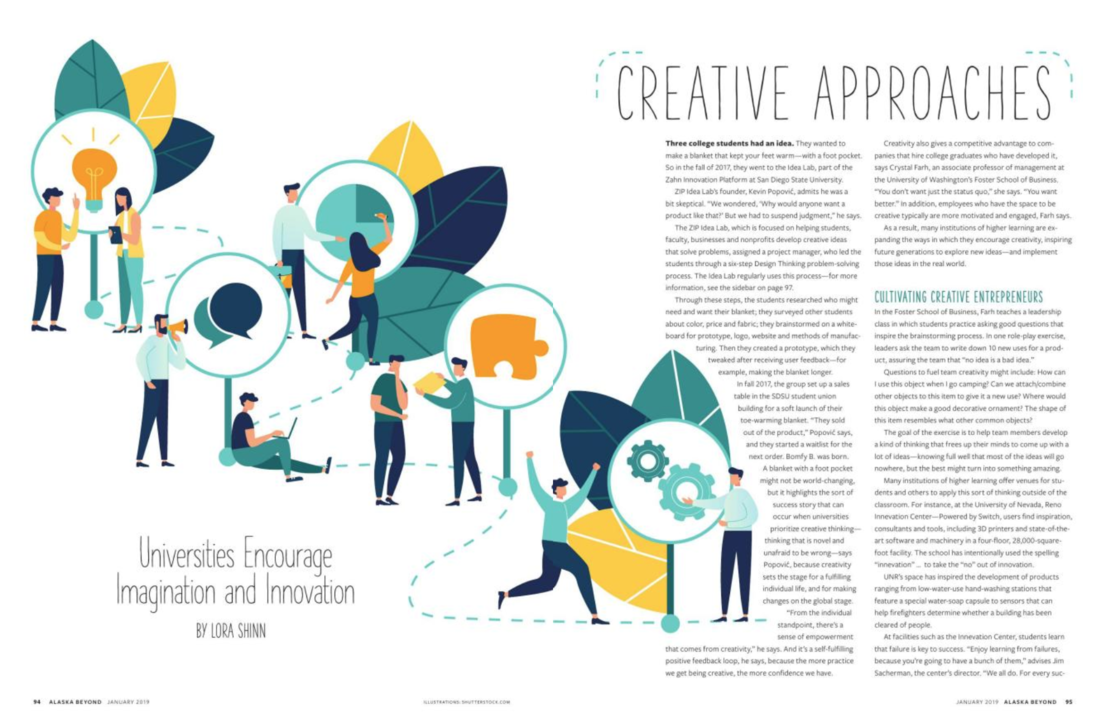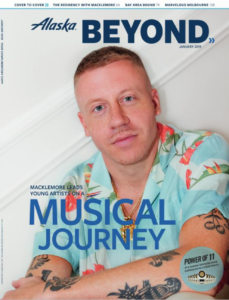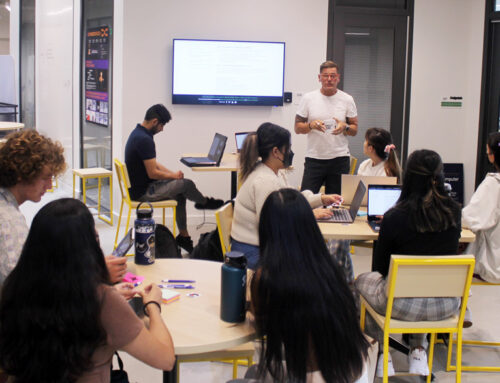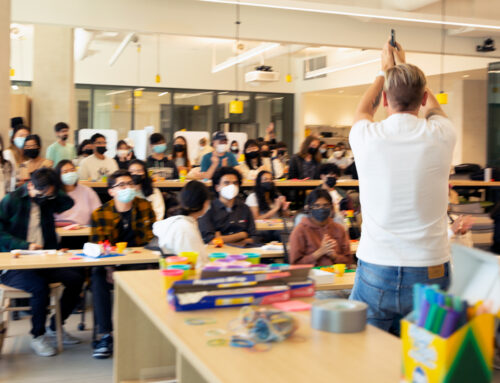Creative Approaches: How Educators, Like Me, Teach Innovation and What Business Leaders Can Learn
The Idea Guy • January 31, 2019
When I accepted the challenge to create a design thinking lab at San Diego State University one of the goals was “to attain national recognition.” With this feature in the January 2019 issue of Alaska Airlines magazine I’ll check that box now.
The school received an inquiry from a reporter. She was tasked with writing an article about how the creative process was being taught in colleges and universities. After some research, my Idea Lab, made the short list.
I had a number of phone calls with Lora Shinn about how my lab was designed – the physical stuff, like stand/sit tables and whiteboard walls. We also talked about how I designed an unpaid internship experience to attract a diverse student staff that generated more than 5,300 hours of service to support other students, faculty and administrators who wanted to learn how to do what we do; creative thinking.
But most of the time we talked about what the students did with this new knowledge (education + experience), and I think this is the most important thing for business leaders to read.
“If you provide a process, people will use it. Start with a process that others have used successfully, like Design Thinking, and see what you can do with it. And if they don’t get it right, let them try it again until they do.”
From the Article
Three college students had an idea. They wanted to make a blanket that kept your feet warm–with a foot pocket. So in the fall of 2017, they went to the Idea Lab, part of the Zahn Innovation Platform at San Diego State University.
ZIP Idea Lab’s founder Kevin Popovic, admits he was a bit skeptical. “We wondered, ‘Why would anyone want a product like that?’ But we had to suspend judgment,” he says.
The ZIP Idea Lab, which is focused on helping students, faculty, businesses and nonprofits develop creative ideas that solve problems, assigned a project manager, who led the students through a six-step Design Thinking problem-solving process. The Idea Lab regularly uses this process–for more information see the sidebar on page 97.
Through these steps, the students researched who might need and want their blanket; they surveyed other students about color, price, and fabric; they brainstormed on a white-board for prototype, logo, website and methods of manufacturing. Then they created a prototype, which they tweaked after receiving user feedback–for example, making the blanket longer.
In fall 2017, the group set up a sales table in the SDSU student union building for a soft launch of their toe-warming blanket. “They sold out of the product,” Popovic says, and they started a waitlist for the next order. Bomfy B was born.
A blanket with a foot pocket might not be world-changing, but it highlights the sort of success story that can occur when universities prioritize creative thinking–thinking that is novel and unafraid to be wrong–says Popovic, because creativity sets the stage for a fulfilling individual life, and for making changes on a global scale.
From the individual standpoint, there’s a sense of empowerment that comes from creativity,” he says. And it’s a self-fulfilling positive feedback loop, he says, because the more practice we get being creative, the more confidence we have.”
Read the complete article here.
The Takeaways
You can teach creativity. I’ve done it at SDSU, and others in the article, like University of Washington, University of Reno, University of Idaho, Montana State, University of Redlands, and Washington State University have done it too.
If you provide a process, people will use it. Start with a process that others have used successfully, like Design Thinking, and see what you can do with it. And if they don’t get it right, let them try it again until they do.
Create an environment that encourages creativity and innovation and it will happen. Start with helping individuals feel safe to explore their own abilities. Work to build better teams, outside of the norm and diverse in contribution. Message from the C-Suite that creativity is valued, failure is okay, and we’re all in this together. – kp
